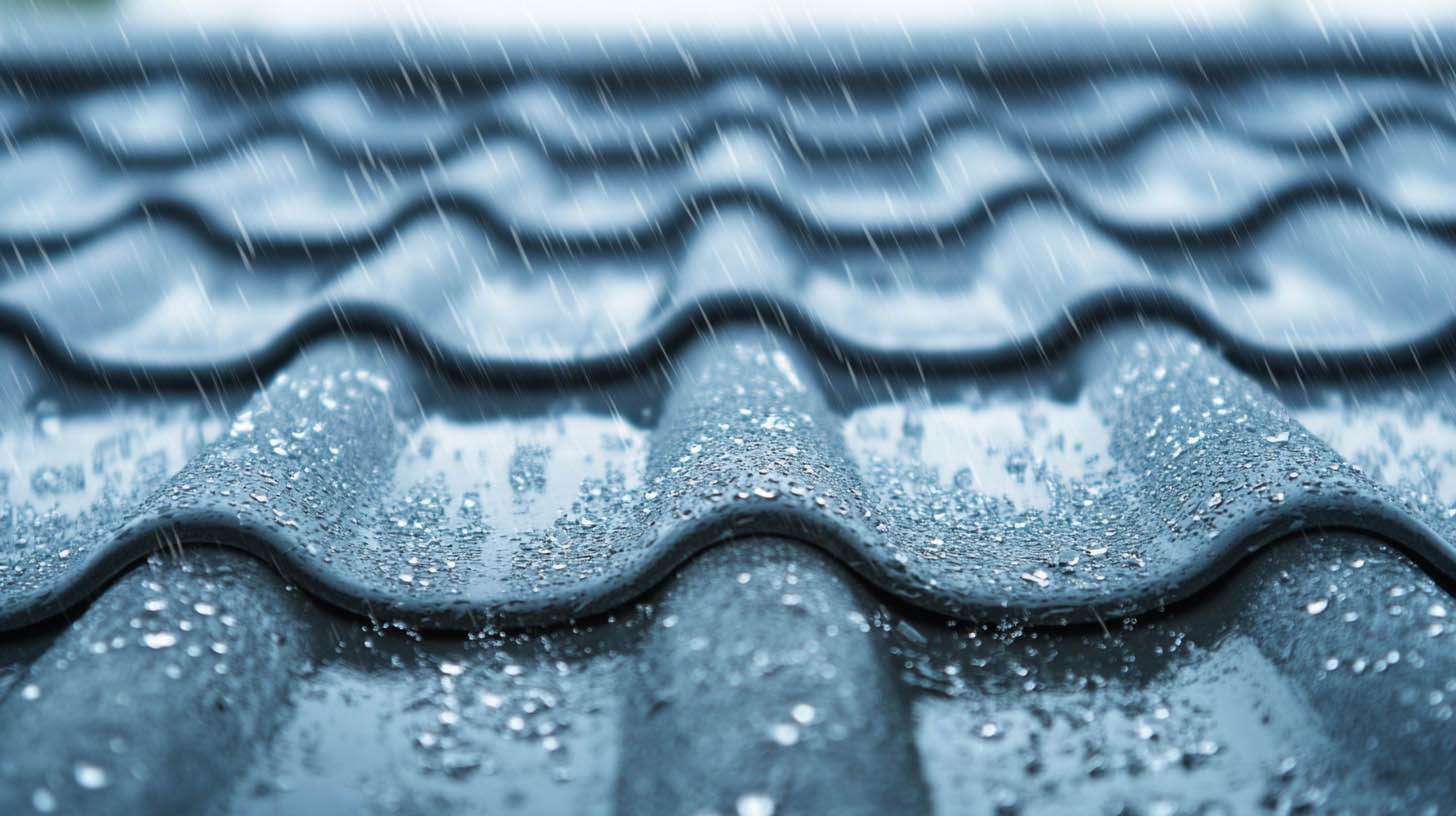
Selecting the right roof for a rainy environment is essential to protecting your home. Factors like water resistance, durability, and slope are critical for ensuring efficient drainage and preventing moisture damage. At Rainstoppers Roofing, serving Charleston, WV, we combine expertise with quality materials to help homeowners tackle wet weather challenges.
Key Considerations for Rainy Climates
Water Resistance
A roof’s ability to repel water is its most crucial feature in a rainy climate. Proper materials and installation techniques ensure water flows off without seeping into your home.
- Best Materials: Metal, slate, and synthetic options offer superior water resistance.
- Sealing: Proper sealing around joints and edges prevents leaks.
- Overlapping Shingles: Shingles layered correctly help direct water away from vulnerable areas.
Durability
A durable roof withstands heavy rain, strong winds, and temperature fluctuations.
- Recommended Materials: Metal and concrete tiles stand out for their strength.
- Weatherproof Coatings: Coatings add an extra layer of protection against moisture.
- Warranties: Choose products with comprehensive warranties for peace of mind.
Slope and Drainage
The slope of a roof significantly affects its ability to manage water runoff.
- Steeper Slopes: These allow water to drain quickly, reducing the risk of pooling.
- Gutter Systems: Functional gutters channel rainwater away from your home.
- Maintenance: Regularly cleaning gutters ensures proper drainage.
Top Roofing Materials for Rainy Climates
Metal Roofing
Metal roofs are highly durable, water-resistant, and low-maintenance. They effectively shed water and can last for decades with minimal upkeep. Materials like steel, aluminum, and copper offer various aesthetic and functional benefits. However, proper insulation is recommended to minimize noise during heavy rain.
Slate Tiles
Known for their elegance and strength, slate tiles are exceptionally water-resistant and long-lasting. While they provide excellent protection, their weight often requires additional structural support, increasing installation costs.
Asphalt Shingles
Asphalt shingles are affordable and effective for rainy climates. They provide good water resistance but may require more maintenance over time, especially in areas prone to algae growth.
Synthetic Roofing Materials
Synthetic options, including rubber and composite shingles, are lightweight, durable, and eco-friendly. These materials mimic the look of slate or wood while providing enhanced water resistance.
Clay and Concrete Tiles
These tiles are durable and weather-resistant, making them ideal for areas with heavy rainfall. However, their weight requires a robust structural foundation.
Best Roof Shapes for Rainy Climates
Gable Roof
The steep pitch of a gable roof allows water to flow off easily, minimizing pooling and leaks. Its simple, triangular design is highly effective for shedding rain.
Hip Roof
A hip roof slopes on all sides, ensuring efficient water runoff. Its aerodynamic design is also resistant to wind damage, making it ideal for storm-prone regions.
Shed Roof
A single sloping surface, the shed roof is simple and efficient in managing water. It’s a popular choice for modern homes and extensions.
Mansard Roof
The combination of steep lower slopes and gentle upper slopes helps manage water while providing additional attic space.
Pro Tips for Rainy Climates
Roof Coating
Applying a waterproof coating enhances your roof’s ability to repel water. Popular options include acrylic and silicone-based coatings, which also improve energy efficiency by reflecting heat.
Insulation and Ventilation
Proper insulation prevents condensation inside your home, while ventilation promotes airflow and reduces moisture buildup.
Regular Maintenance
Routine inspections help identify potential issues early, such as damaged shingles or clogged gutters. Addressing minor problems promptly prevents costly repairs later.
Interesting Fact: Metal roofs can last over 50 years with minimal maintenance, making them one of the most cost-effective options for rainy climates.
FAQs
1. What is the most water-resistant roofing material?
Metal and slate are among the most water-resistant materials, making them excellent choices for rainy climates.
2. How does roof slope impact water drainage?
Steeper slopes allow water to flow off more quickly, reducing the risk of pooling and leaks.
3. Are clay tiles suitable for wet climates?
Yes, clay tiles are highly durable and water-resistant, but they require strong structural support due to their weight.
4. How can roof coatings enhance performance?
Roof coatings add a protective barrier against moisture, extending the roof’s lifespan and improving energy efficiency.
5. Why is regular maintenance important in rainy areas?
Routine inspections and gutter cleaning prevent water buildup, reducing the risk of leaks and structural damage.
For those living in wet climates, choosing the right roof and maintaining it properly are critical steps in protecting your home. With expert guidance from Rainstoppers Roofing, you can ensure long-lasting durability and peace of mind. If you want to read a blog about effective marketing strategies for roofing companies, click here.
